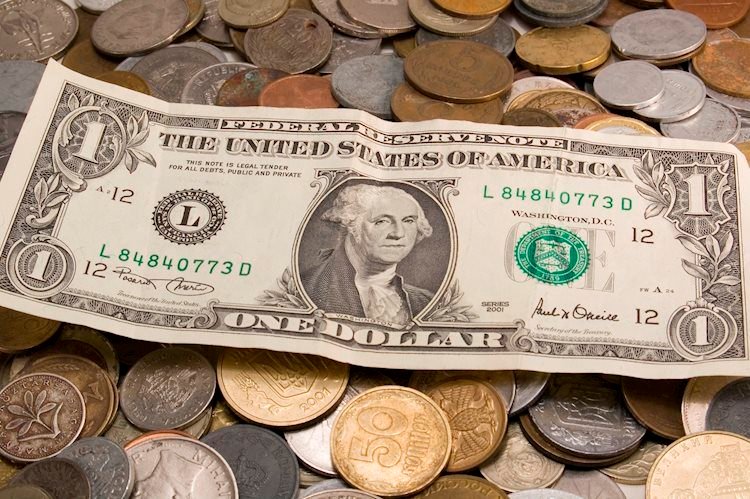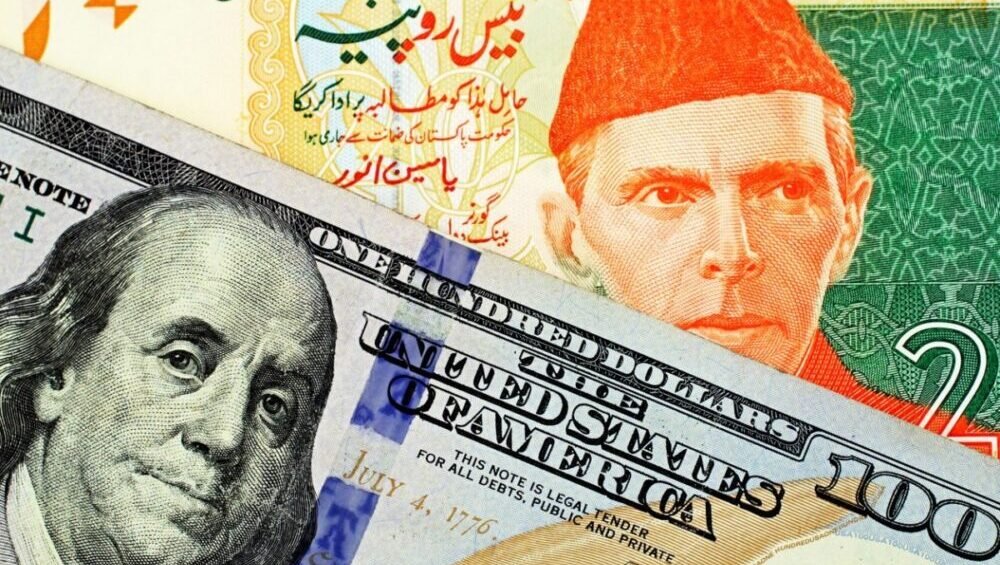Overview: The US dollar is trading heavier against most of the world’s currencies today. Better than expected Australian employment data, which boosts speculation that the central bank’s easing cycle is over, helps explain the Australian dollar’s gain to its best level of the month. However, sterling is firm and extended yesterday’s gains despite news that the economy contracted in September and barely grew at all in Q3. September industrial output in the eurozone disappointed but the euro reached $1.1635, a new high for the month, as well. Emerging market currencies are also firmer, but for a few East Asian currencies, and the Turkish lira.
Equities are mostly higher. China’s CSI 300 rose 1.2% to lead the regional rally. Only Taiwan and Australia among the larger bourses failed to advance. Europe’s Stoxx 600 is trading with a firmer bias, with a three-day rally in tow. US index futures are largely steady. European benchmark 10-year yields are narrowly mixed, and the 10-year US Treasury yield is little changed near 4.07%. The US Treasury will sell $205 bln in bills and $25 bln 30-year bonds today. Four Fed officials speak but at least four officials who have spoken recently seem to favor standing pat next month. Gold continues to recover. It is higher for the fifth consecutive session today and reached $4240, the highest since October 21 when it traded to $4375 (record high set the previous day ~$4381.50). December WTI has steadied after plunging nearly 4.2% following heighted concerns about oversupply. It initially extended yesterday’s decline to almost $58 before steadying. Net-net it is off about a dollar from last week’s settlement ~$59.75).
USD: The Dollar Index snapped a five-day down draft yesterday but has been sold to a new low for the month today near 99.15. It has frayed the 20-day moving average (~99.30) but has not settled below it since September 23. Support is seen in the 98.75-99.00 band. The daily momentum indicators are still falling. The longest government shutdown in US history is over. Arguably part of the reason shutdowns have recurred is that the economic fallout tends to be minimal, even if the disruption of lives is real. The rule of thumb is that every week the closure costs about 0.1% of GDP. The Atlanta Fed GDP tracker had GDP rising by 4% in Q3. When the economy re-opens, it typically recoups the loss growth quickly. October CPI was initially due today, but it may never be seen. The September employment report though, which was due on October 7, could be released early next week. Recall that according to ADP private sector employment fell by 29k, the second consecutive monthly decline.
EURO: Yesterday, the euro mostly traded in about a third-of-a-cent range below $1.1600 yesterday. Options for 1.5 bln euros at $1.1590 expire later today. Another batch for 1.25 bln euros at $1.1575 also expires today. It posted its highest settlement this month, near $1.1595. It has risen to $1.1635 today, which approached the (38.2%) decline since the year’s high on September 17 near $1.1920. Nearby resistance is seen in the $1.1640-50 area. Industrial output in the eurozone rose by a disappointing 0.2% (median forecast in Bloomberg’s survey was of a 0.7% recovery after contracting 1.2% in August. On a workday adjusted basis, industrial output rose 1.2% year-over-year (2.0% expected). The manufacturing PMI has improved every month this year but September ironically, when it slipped to 49.8 from 50.7 in August. Tomorrow, the eurozone is expected to confirm that aggregate economy grew by 0.2% in Q3 after 0.1% in Q2 (and 0.6% in Q1). EMU’s September trade balance will also be reported. Through August, the trade surplus averaged 13.4 bln euros a month. In the first eight months of 2024, the monthly average was 15.4 bln euros. In August, exports were off 6.7% year-over-year, and imports were down 4.9% year-over-year.
CNY: The dollar fell to an eight-day low yesterday against the offshore yuan slightly below CNH7.1110 and extended the decline to CNH7.0940 today. This is a new low for the month. The October low was recorded on October 29 near CNH7.0885 and the year’s low from September 17 was a little lower, CNH7.0850. The PBOC set the dollar’s reference rate at CNY7.0865 after fixing it yesterday at CNY7.0833, the lowest since last October. October lending figures were reported showing less of an increase than expected, and money supply growth slower. China’s data deluge is set for tomorrow. October retail sales, industrial output, and fixed asset investment look weaker sequentially. Still, the currency seems less influenced by the macro data and more sensitive to the dollar’s broad direction. Meanwhile, the US 10-year premium over China reached the least of the year in late October near 212 bp, which is about 100 bp less than seen in January. The premium is now near 225 bp. China issued a total of $4 bln three- and five-year dollar bonds in Hong Kong last week at nearly the same rate as US yields, and were oversubscribed 30x. Beijing has announced intentions to issue euro-denominated bonds (~4 bln) in Luxembourg next week.
JPY: The dollar traded above JPY155 in North America yesterday for the first time since early February. The gains came despite the pullback in US rates and warnings from Japan’s finance ministry. Still, the dollar pulled back to previous resistance near JPY154.50 near midday in NY and edged lower to nearly JPY154.30 today. The policy bind is clear. Due to the prime minister’s previous push back against tighter BOJ policy, the central bank felt compelled to protect its independence and the government seemed to accept this. Yet, the swaps market has lowered the chances of a hike next month to about 40% from 50% a week ago. A rate hike could also make material intervention in the foreign exchange market more likely. Tomorrow, Japan is expected to report a 0.3% rise in October PPI, the same as in September. The year-over-year pace would slow to 2.5% from 2.7%. The increase in producer prices peaked at 4.3% in February and March. That was the highest since mid-2023. Japan also reports the September tertiary industry index tomorrow. It is likely to have improved after falling by 0.4% in August. Early Monday, Japan reports its first estimate of Q3 GDP. The median forecast in Bloomberg’s survey envisions a 2.4% annualized contraction. The world’s third-largest economy grew by 2.2% in Q2. The weakness of the economy may help explain why the BOJ did not feel comfortable raising rates, but economic traction appeared as the quarter wound down.
GBP: Sterling was sold to $1.3085 in the North American morning before the nearly GBP1.9 bln options expired at $1.3100 yesterday. The (61.8%) of the recent bounce (from almost $1.3000 last week to $1.3190 on Monday) is near $1.3080. Sterling recovered to almost $1.3140 by midday in NY yesterday and despite a disappointing GDP data today, sterling has risen to $1.3170 today. The UK economy eked out 0.1% growth in Q3 after a 0.3% expansion in Q2 and 0.7% in Q1. The economy contracted 0.1% in September and August’s 0.1% growth was revised to flat. The sum of the monthly GDP reports in Q3 was -0.2% after 0.2% in Q2 and 0.6% in Q1. In the quarter, consumption remained subdued (0.2% vs 0.1%), while government spending slowed (0.3% vs. 1.3%), and total business investment continued to contract (-0.3% vs. -1.1%). In September, industrial output fell 2% and services output crept up (0.2%), construction output rose 0.2% (0.3% in August), and the trade deficit narrowed slightly.
CAD: The US dollar, which peaked last week near CAD1.4140, a seven-month high, fell below CAD1.40 yesterday for the first time this month. It slipped slightly below CAD1.3995 yesterday and eased to CAD1.3985 today, the (61.8%) retracement of the leg up that began after the Federal Reserve and the Bank of Canada cut rates in late October, which is also around the (38.2%) retracement of the larger rally that began with the Fed’s September 17 rate cut. Options for almost $500 mln at CAD1.3980 expire today. A break of that area could signal a move toward CAD1.3935 next. It is around where the 200-day moving average and the (50%) retracement of the rally since mid-September are found. Today’s manufacturing and wholesales sales figures do not typically have much market impact. However, the Canadian dollar typically underperforms in a softer US dollar context.
AUD: The Australian dollar reached a seven-day high yesterday and surpassed the (50%) retracement of the decline since last month’s Federal Reserve rate cut and reached $0.6550. Better employment data and the broadly weaker greenback have seen the Aussie extend its gains to $0.6580 today, surpassing the next retracement (61.8%) and pass congestion is in the $0.6555-60 area. The high for late October was near $0.6620 and that seems to be a reasonable near-term target. Australia’s labor market improved in October, and it reinforces the sense that the central bank will remain on the sidelines for at least the next several months. Australia gained 42.2k jobs overall, which is twice what was expected, and full-time jobs surged by 55.3k. The unemployment rate eased to 4.3% from 4.5%. The futures market does not have much more than a 25% chance of a cut by the end of Q1 26 and many think that the easing cycle could very well be over.
MXN: The US dollar recorded a two-month high last week near MXN18.77. It has fallen for six consecutive sessions through yesterday, for a cumulative decline of about 2.6%. The greenback was sold to MXN18.2760. The losses were extended to about MXN18.2540 today. It is the lowest level since last month’s low, recorded on October 1 around MXN18.24. The low for the year was seen on September 17 (Fed Day) near MXN18.20. Meanwhile, President Sheinbaum efforts to prepare for next year’s USMCA review was dealt a setback. In early September, the government proposed raising the tariff on some 1400 categories of imports from China. However, opposition from business and some within her Morena Party balked, concerned about the dependence on China for machine components, semifinished goods, and raw materials. The current legislative session ends in mid-December.






